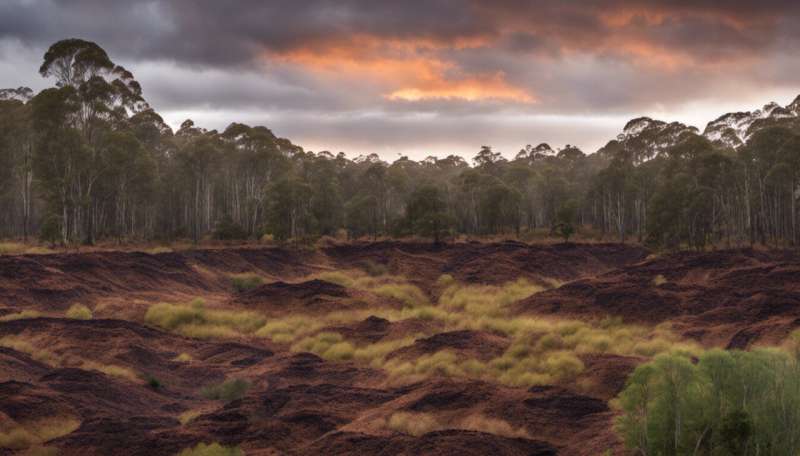When bushfires meet old septic tanks, a disease outbreak is only a matter of time

The into the summer fires is an opportunity to start seriously reconsidering our built environment. We need to prepare for accelerating climate change, our changing natural landscape and future natural disasters.
This should include reassessing our . While the bushfire Royal Commission is working through many of these issues, one that has so far escaped attention is the recently developed , now being considered by states and territories.
The wastewater systems widely used in rural and regional Australia are vulnerable to natural disasters such as floods and severe bushfires. There is a real risk of outbreaks of water-borne disease, which would compound the misery those catastrophic events cause.
It was simply dumb luck that a disease outbreak did not happen last summer. The current standard and even its proposed replacement is inadequate to protect communities in a future of worsening disasters under climate change.
A major health hazard
Outbreaks of water-borne diseases are a of major flooding disasters, especially in developing countries. This isn't common in Australia, though in 2011, the Queensland floods led to a handful of cases of the water-borne, bacterial disease .
While there are no recorded major disease outbreaks after bushfires, it's a preventable accident as bushfires become more frequent and intense in Australia.
In Sydney, 95% are connected to sewers, but the figure falls to 93% for the rest of New South Wales.
Those not connected to these "trunk sewers" the septic tank. This applies to communities on the fringes of our cities as well as regional towns, including many in fire-prone areas.

A is essentially a large underground chamber to receive liquid wastes. Solids fall to the bottom and undergo anaerobic digestion, where micro-organisms break down matter in the absence of oxygen. This releases gasses that are vented to the atmosphere, while liquids are released into the soil. The sludge at the bottom of the tank needs to be pumped out every few years.
Damage to septic tanks is one of the major health hazards people face when they return to their bushfire-affected homes. The in NSW, for example, even offered free sewerage management system checks for residents with septic tanks to mitigate this risk.
Why septic tanks are so vulnerable
The standard septic tank uses a form of waste treatment known as the . These require electricity to work and also have important components such as electronic grid boards above ground.
Without power they are effectively just holding tanks that can overflow and release untreated sewage into the surrounding environment and waterways. And this can lead to such as salmonella, viral diseases such as hepatitis A or gastroenteritis, or diseases caused by parasites such as giardia. can be transmitted through wastewater.
Electricity is especially vulnerable when disasters occur—even more-so when the components are above, not below, ground. In January at the peak of the bushfires, affected about 50,000 homes in southeast NSW alone. On average, the power outages lasted three and a half days.
Most on-site waste treatment systems have a regulated 1,000 liter emergency overflow reservoir. That would only take a few days to fill up. After that, there is a health risk from escaping sewage.
Wasteful and unsafe
There is increasing concern from safety experts and environmental scientists about the new standard (named ) recently devised by Standards Australia. It's based on old technology, which is both wasteful and unsafe.
It's wasteful, because it requires wastewater treatment systems with a minimum capacity of between 1,200 and 5,000 liters a day—a size designed to process the waste from eight to 33 people. But the consists of only 2.6 people.
While the size does make them safer—as they can last for longer before overflowing—the weak point is the need for above-ground electricity services. Systems above ground are destroyed in the sort of catastrophic fires we saw last summer and can be crippled by flooding or cyclonic winds.
On the other hand, structures underground are protected by the earth from the radiant heat of fires, the rushing water of floods and the extreme wind gusts of cyclones.
We must upgrade the wastewater system
This is why we need to upgrade the septic tank standards to newer, so-called "passive" , which are widely used overseas, and can operate safely for fewer people.
These new facilities have many advantages over the old technology, including using less fossil fuels to operate. But the biggest benefits are that they use no electricity and are completely underground, with no above-ground operational components or potentially risky sewage dispersal.
This means they have built-in resilience to the sorts of natural disasters we face in Australia: bushfires, floods and cyclones.
A standard like AS1546.3.2017 does not suit the goal of more resilient and environmentally sound neighborhoods and communities. Such a standard should not exist in a country that's aware of its environmental obligations and equipped to face more natural disasters in coming years.
Provided by The Conversation
This article is republished from under a Creative Commons license. Read the .![]()



















